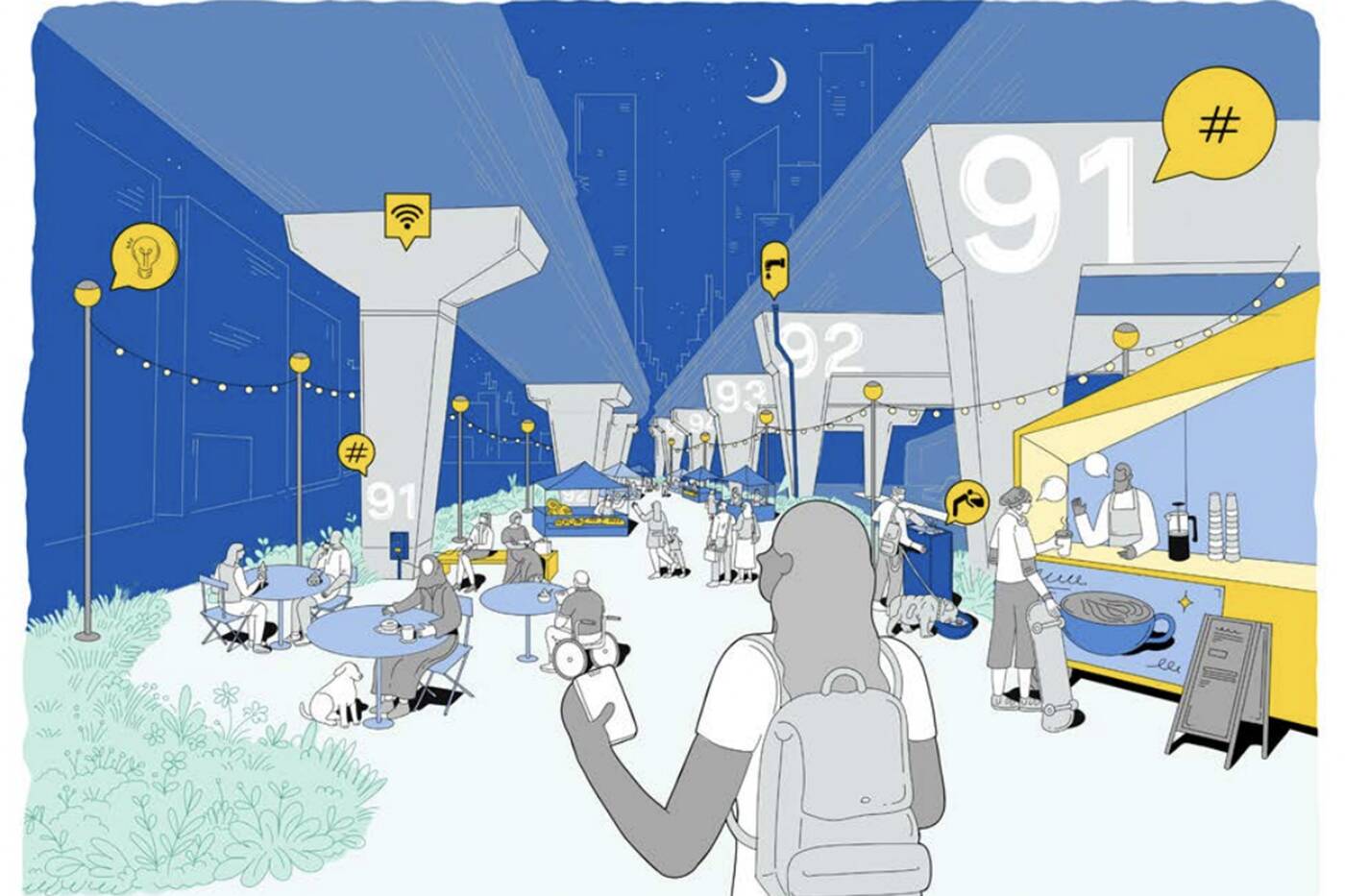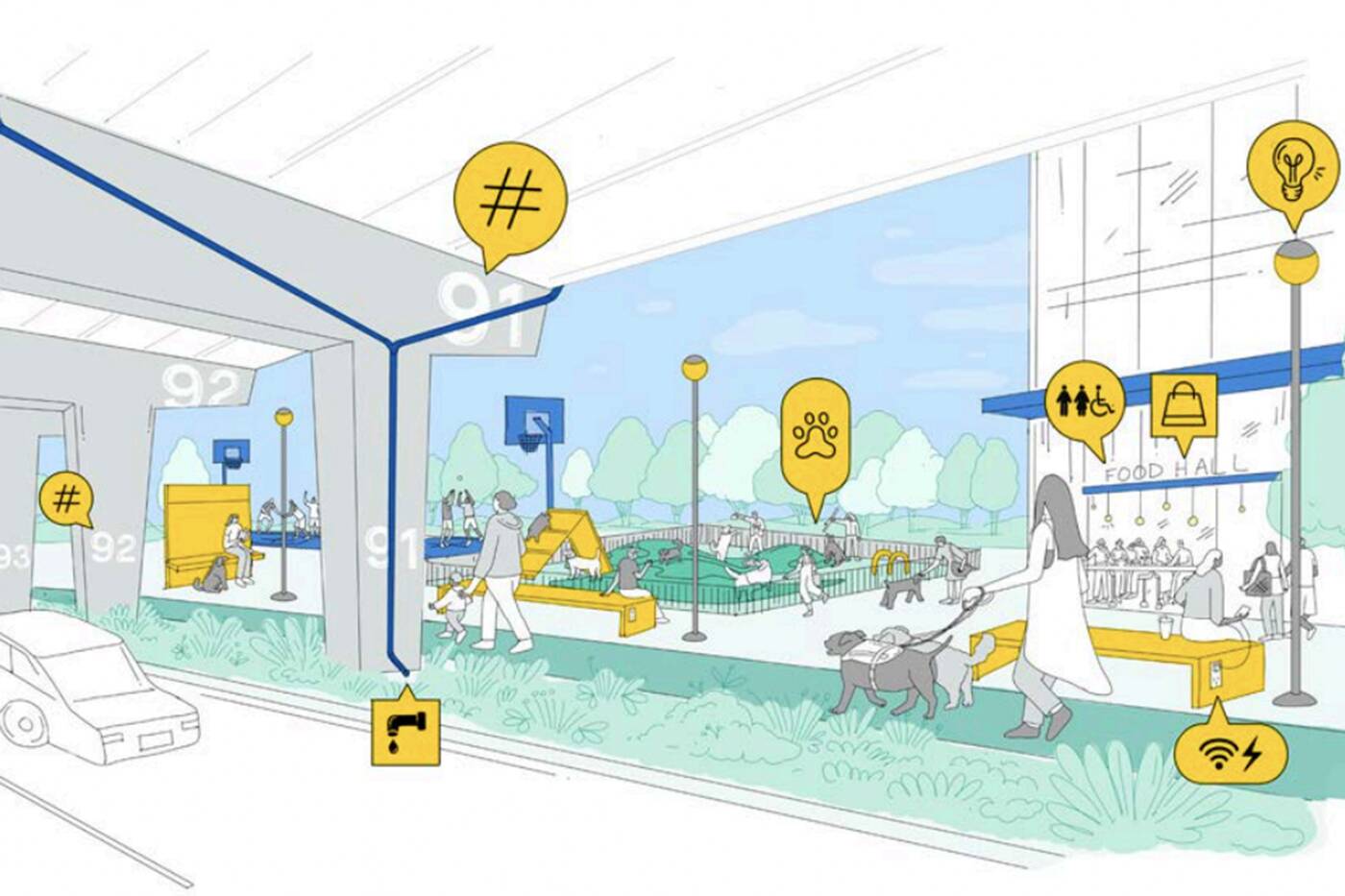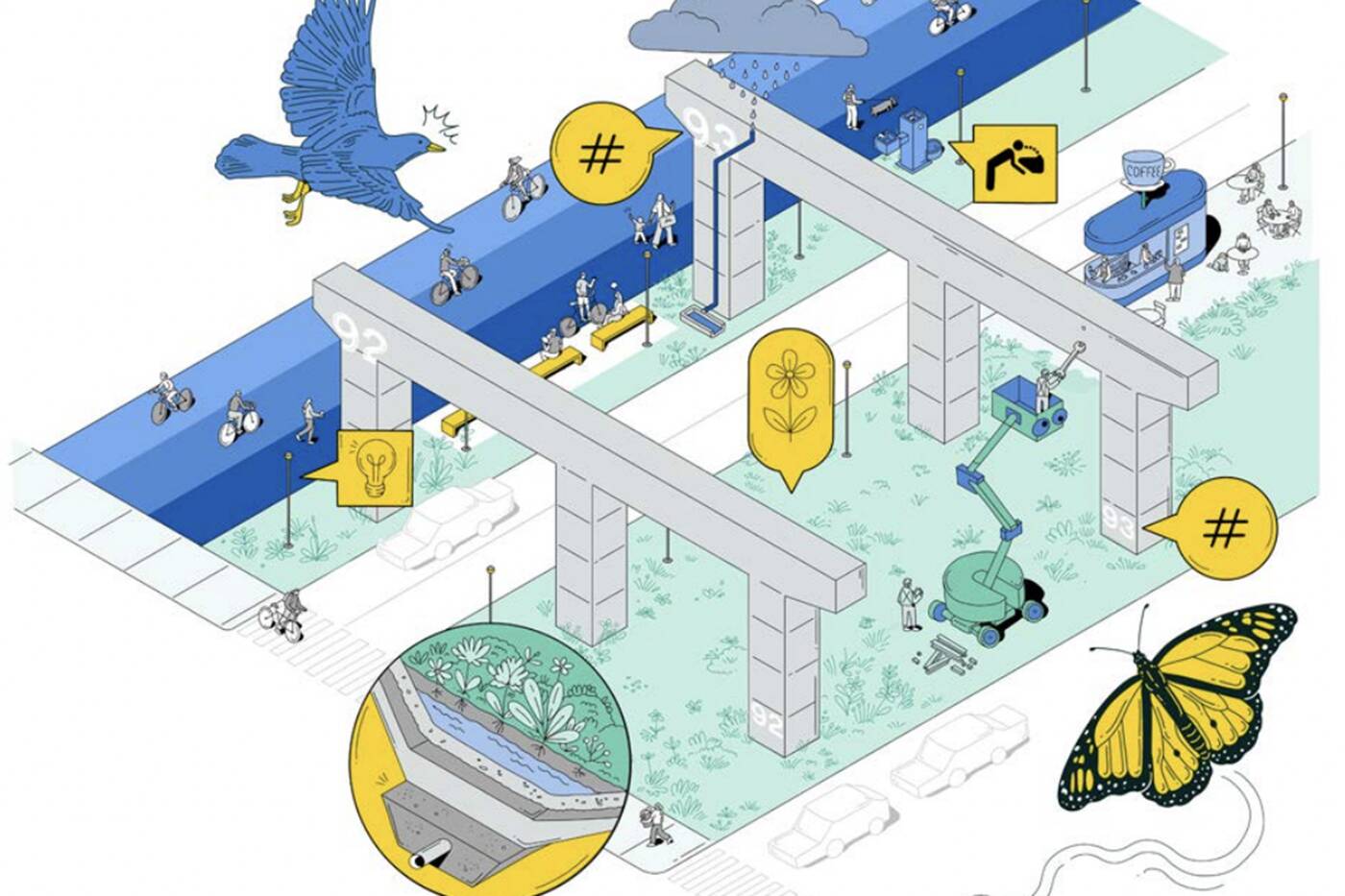
Here's what dead space under Toronto's Gardiner Expressway could soon look like
While everyone in Toronto may be talking about the construction that is going to bog down traffic on the Gardiner Expressway for the next three years, a swath of the dead space under the highway is set to get a major refurbishment, and new details of the extensive plans were just released.
In the same vein as the Bentway — the multi-use space under the highway that hosts one of the city's favourite skating rinks each winter, along with tons of year-round programming — more real estate around the infrastructure is one step closer to being completely reimagined for public use.
Focusing mostly on the area from Dufferin Street to the Don Valley Parkway, the City of Toronto and the Bentway Conservancy are hoping to "harness the Gardiner's unique character" while upgrading the passage not only aesthetically, but environmentally, functionally and with respect to safety in a multitude of ways.

The "underapprecciated and overlooked" space will hopefully eventually be full of life, with various attractions, amenities and tons of local flora for the public to enjoy.
A group of City executives formally recommended earlier this month that the blueprint for these changes, the Under Gardiner Public Realm Plan, be endorsed and given its own advisory committee to get things moving.
"The plan provides a public realm vision with recommendations for 'baseline' improvements that will provide a cohesive public realm; where residents and visitors could encounter amenities such as pedestrian lighting, public wi-fi, accessible seating, wayfinding and public art. Ideas for site specific improvements have also been included," the motion reads.
With it came some new documents about the project's vision detailing how the space will be redefined as its own vibrant destination, taking inspiration from similar projects in cities around the globe.

Greening up the space with new plants, eco-friendly design and water management technology is a cornerstone of the plan, along with improving the experience for pedestrians and cyclists.
Key objectives of the plan include increasing connectivity for all types of road users (especially north-south), restoring natural balance through rewilding efforts, and generally enhancing and redesigning the public realm to "enable a diversity of uses and contribute to thriving neighbourhoods."
Greening up the space with tons of new vegetation with help dampen sound from the road above while also serving to better manage water runoff, boost the air quality and the look of the space, and more.
Public art, cultural landmarks, and multi-purpose gathering areas and parkettes that can be used for different types of activations in "previously underappreciated and overlooked spaces" will also help create a new, cohesive identity for the district.
The addition of amenities like seating, washrooms, warming stations, water fountains, lighting, public WiFi, outlets, wayfinding signage, new cycling paths and walking trails will also help make the area more user-friendly.

Reconnecting the area with nature is a crucial part of the Under Gardiner Public Realm Plan.
The next steps outlined in the latest motion, last updated on March 21, will be considered by City Council in April.
Rendering via City of Toronto
Latest Videos
Latest Videos
Join the conversation Load comments






